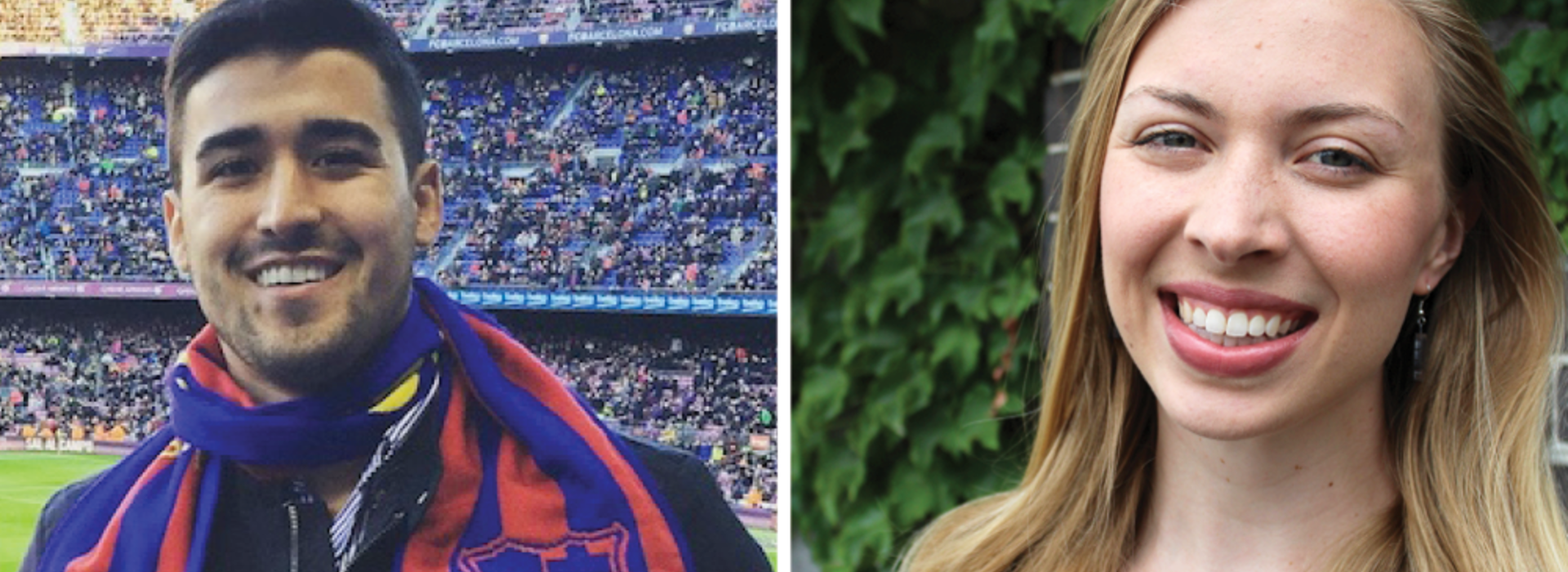
Two Medical Students Use Grant Funding to Study Disparate Health Equity Issues
Medical research can encompass a wide variety of ideas and scientific processes. It can lead to new discoveries, inform best practices for clinical care and confront challenges within healthcare systems.
The Minnesota Medical Association funded 12 medical student's health equity projects, two of which belong to University of Minnesota Medical School students. Third-year medical student Arman Shahriar and fourth-year medical student Sylvia Blomstrand are completing disparate research projects that will inform others about pressing issues within medicine. Shahriar is analyzing how students finance medical school and how race and ethnicity, parental income and other factors can play a role. Blomstrand is studying healthcare experiences of the d/Deaf community and trying to determine where improvements can be made in provider education and clinical care.
Helping the Deaf Community
Blomstrand’s research is gathering data on how well doctors are addressing the needs of the d/Deaf community. Her project’s survey looks at three domains: what the healthcare experience is like for deaf patients, d/Deaf health literacy, and culture and awareness. “The goals of the project are to improve deaf healthcare and to gain an understanding of where we’re failing these patients,” Blomstrand said.
Blomstrand began by speaking with her cousin, who is an American Sign Language (ASL) student. They realized that they didn’t exactly know how healthcare impacted the d/Deaf community or how physicians were meeting their unique needs. After looking up information online, she found that deaf patients have very poor health outcomes, in addition to the World Health Organization naming hearing loss as one of their top ten priorities by 2030.
“I’ve always been interested in caring for the underserved and minority populations, and with the onset of COVID-19, I realized that deaf patients were having a difficult time. With the PPE, you can’t read lips or observe body language as easily, which makes it very difficult to communicate,” Blomstrand said.
So, she decided to launch a research project to try and learn which specific aspects of healthcare were failing these patients the most. In many healthcare settings, it’s quickly becoming standard to have an ASL interpreter available, but rural areas often struggle to find people with the skillset. Unfortunately, this is just one example.
“We’re able to communicate with limited ASL sometimes, but we tend to fail patients when there are cultural differences that we’re unaware of. For example, not everyone sees being deaf as a disability, and some are pushed into getting cochlear implants or being assimilated into a culture that includes hearing when they’re not comfortable with it,” Blomstrand said.
The researchers will conduct interviews with deaf patients to try and elucidate specific problems before completing a statistical analysis of their overall results. Their work also holds potential to influence medical school curriculum by providing information that better prepares future providers for interactions with the d/Deaf community.
“We’re hoping to provide guidelines for medical schools or anyone that would be a leader for a healthcare team. That way they can train better students and develop physicians who better understand the deaf population. That’s really our long term goal,” Blomstrand said.
Medical School Financing
It’s no secret that higher education continues to be costly, which can oftentimes determine whether or not someone is able to advance their education at all. For medical school in particular, the current national median for in-state cost of attendance is over $270,000.
Money can be a taboo subject, making it difficult to determine how some students are coming up with this enormous amount of money while others are not. “Anecdotally, you hear people talk a lot more about loans than scholarships or family money. The first step in addressing disparities of any kind is to describe them. To date, no one has described how students are financing medical school,” Shahriar said.
The high price of medical school can negatively impact future physicians in multiple ways. First, exorbitant costs can completely deter otherwise academically-qualified, underrepresented minorities from the field. Second, a heavy debt-burden during medical training has been associated with poor mental health and well-being.
Shahriar’s grant will fund the acquisition of data from the Association of American Medical Colleges as well as a professional statistician to interpret the findings. The research project aims to better understand how economic inequality – especially from parental income or a person’s race and ethnicity – translates into medical academia as well as how financing can inhibit someone’s trajectory into medicine.
“We are hoping to bring transparency to an opaque topic, so that stakeholders in the domains of scholarship and financial aid are aware of the current state of medical school financing and any disparities that may exist,” Shahriar said.